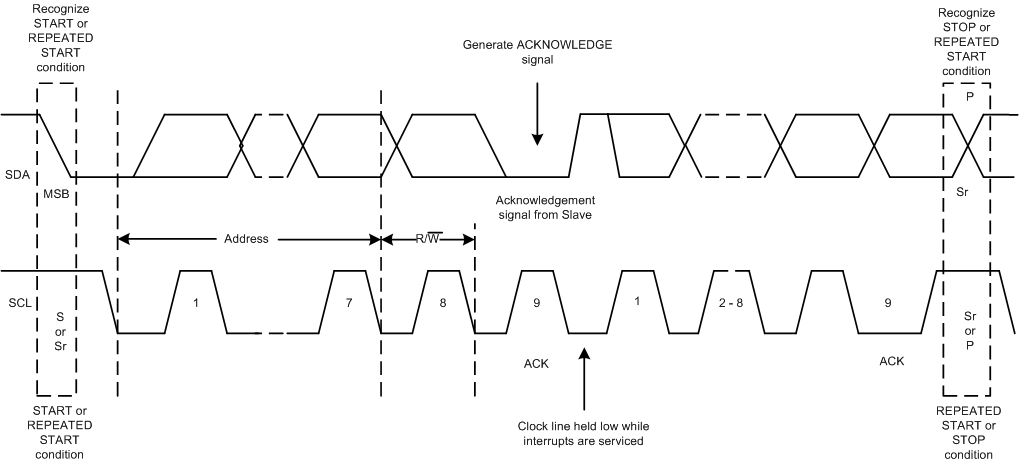SLASEQ4A October 2018 – December 2018 DAC43608 , DAC53608
PRODUCTION DATA.
- 1 Features
- 2 Applications
- 3 Description
- 4 Revision History
- 5 Device Comparison Table
- 6 Pin Configurations and Functions
-
7 Specifications
- 7.1 Absolute Maximum Ratings
- 7.2 ESD Ratings
- 7.3 Recommended Operating Conditions
- 7.4 Thermal Information
- 7.5 Electrical Characteristics
- 7.6 Timing Requirements: I2CTM Standard Mode
- 7.7 Timing Requirements: I2CTM Fast Mode
- 7.8 Timing Requirements: I2CTM Fast+ Mode
- 7.9 Timing Requirements: Logic
- 7.10 Typical Characteristics: 1.8 V
- 7.11 Typical Characteristics: 5.5 V
- 7.12 Typical Characteristics
- 7.13 Typical Characteristics
-
8 Detailed Description
- 8.1 Overview
- 8.2 Functional Block Diagram
- 8.3 Feature Description
- 8.4 Device Functional Modes
- 8.5 Programming
- 8.6 Register Map
- 9 Application and Implementation
- 10Power Supply Recommendations
- 11Layout
- 12Device and Documentation Support
- 13Mechanical, Packaging, and Orderable Information
8.5.2 DACx3608 I2CTM Update Sequence
For a single update, the DACx3608 requires a start condition, a valid I2CTM address byte, a command byte, and two data bytes ( the most significant data byte (MSDB) and least significant data byte (LSDB)), as listed in Table 1.
Table 1. Update Sequence
| MSB | .... | LSB | ACK | MSB | ... | LSB | ACK | MSB | ... | LSB | ACK | MSB | ... | LSB | ACK |
|---|---|---|---|---|---|---|---|---|---|---|---|---|---|---|---|
| Address (A) byte | Command byte | MSDB | LSDB | ||||||||||||
| DB [32:24] | DB [23:16] | DB [15:8] | DB [7:0] | ||||||||||||
After each byte is received, the DACx3608 family acknowledges the byte by pulling the SDA line low during the high period of a single clock pulse, as shown in Figure 59. These four bytes and acknowledge cycles make up the 36 clock cycles required for a single update to occur. A valid I2CTM address byte selects the DACx3608 devices.
 Figure 59. I2CTM Bus Protocol
Figure 59. I2CTM Bus Protocol The command byte sets the operational mode of the selected DACx3608 device. When the operational mode is selected by this byte, the DACx3608 series must receive two data bytes, the most significant data byte (MSDB) and least significant data byte (LSDB), for a data update to occur. The DACx3608 devices perform an update on the falling edge of the acknowledge signal that follows the LSDB.
When using fast mode (clock = 400 kHz), the maximum DAC update rate is limited to 22.22 kSPS. Using the fast+ mode (clock = 1 MHz), the maximum DAC update rate is limited to 55.55 kSPS. When a stop condition is received, the DACx3608 family releases the I2CTM bus and awaits a new start condition.